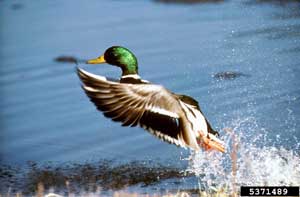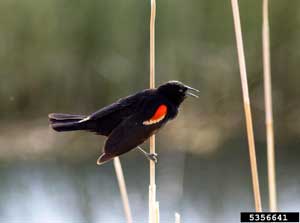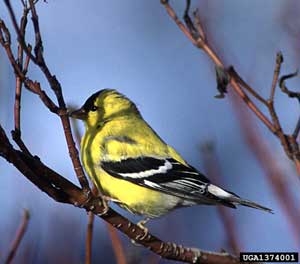Diversity is the Key
- Plant a diverse selection of grasses, forbs, shrubs and trees providing cover and food to support the wildlife you want to manage.
- Select a diverse range of varieties of each type of plant. Intersperse plants, creating a mixed stand.
- Promote and plant woodland, grassland, riparian and wetland habitats. Then p
- lant in locations that form corridors or connections between different larger habitat plantings.
- Create a number of each type of habitat so different habitat are adjacent, forming as many "edge" areas as possible. This takes advantage of the fact that many animals prefer the edge where two different types of habitats meet. Create as much "edge effect" as you can.
- Have many sources of water. Ponds, swamps, bogs and bird baths are all good sources of water for wildlife. Place water sources in open and hidden locations.
Grassland Habitat Hints
- Grasslands are made up of many grasses, legumes and forbs. Mix as many species of native grassland species as possible.
- Do not plant grasslands uniformly, but make them patchy to create a mosaic effect.
- Many animal species need a large unbroken prairie area.
- Maintain grasslands by eliminating any woody plants (especially cedars). Control introduced and noxious weed species.
- Add water by forming small "prairie potholes" in low areas and incorporate a small clay seal in the soil of the lowest point.
- Allow piles of dead grasses and forbs to remain through the winter for overwintering cover. Control introduced and noxious weed species.
Woodland Habitat Hints
- Mix evergreen, deciduous and shrub species and plant in random groupings.
- Select species that provide food for wildlife, including forage, nuts, fruits and seeds.
- Select plants that are different heights. Some will give canopy habitat while others form lower habitat cover.
- Allow dead trees to stand if they are in an area that is non-threatening to humans or property. They provide nesting for many wildlife species. Fallen trees also form good cover.
- Snags or piles of brush are perfect overwintering sites.
- Construct thick understory areas with thorny brambles to protect small animals from predators.
- Create water sources by adding small woodland ponds in lowland areas.
Home Habitat Hints
Attracting birds to home landscapes is a popular way for residents to view a variety of species. To attract birds year-round, provide their three basic needs- cover, food, and water. Birdhouses and trees provide a place for nesting, while dense evergreens provide shelter from harsh weather and enemies.
Bird feeders and a variety of landscape plantings provide food. Birdbaths, or other water sources, provide the final habitat component for good backyard habitat. Make sure to clean birdbaths and change the water on a daily basis in the summer to avoid mosquito problems and prevent avian diseases
Many acreage owners also like to encourage bats to take up residence on their property and help with mosquito control. Bat houses are simple to construct and can encourage bat residents on your property all year.
Wetland and Riparian Habitat Hints
True wetland or riparian habitats are very difficult to create where the natural components do not exist. Where wetland habitats exist, protect them from draining and pollution. Manage for natural wetland plants and prevent their destruction.
If a creek or stream transects the property, allow at least 50 feet on each side for a riparian habitat strip.
- Plant trees and shrubs that provide food, cover and prevent erosion. Many tree species are adapted to riparian locations.
- Use riparian habitats to connect other types of habitats.
Consider trying to create wetlands as well as ponds. Establish large shallow areas around ponds with cattails and wetland grass.



